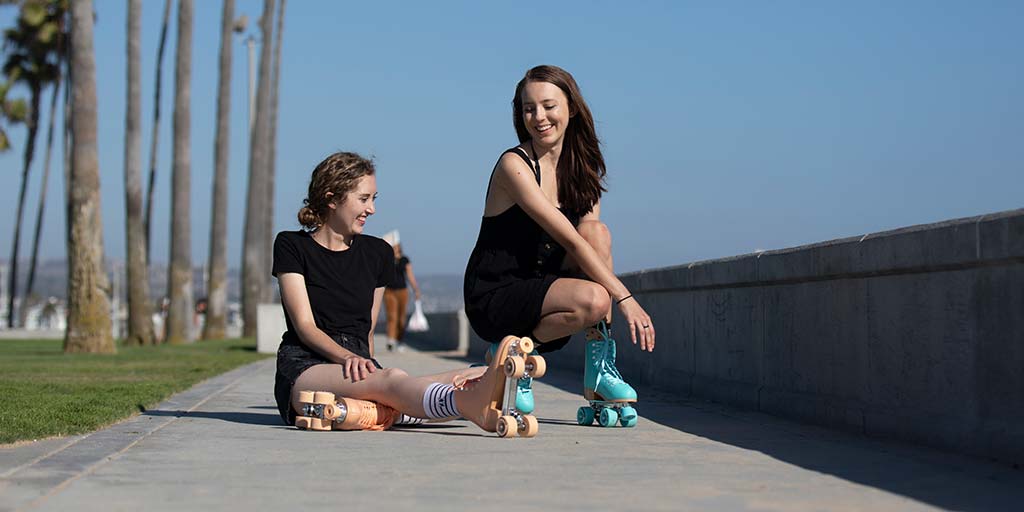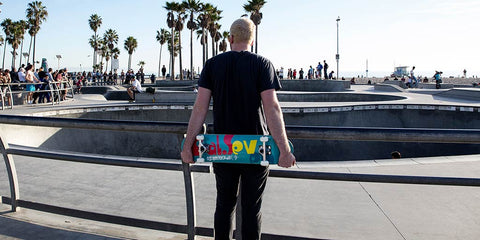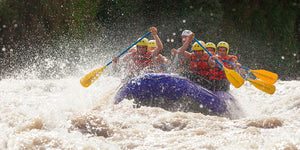Are Roller Skates Dangerous?

Whether you are a parent buying your little one their first pair of roller skates or an adult looking to pick up a new hobby, you might be torn between the excitement of cruising down the boardwalk and inadvertently causing yourself harm.
So, is roller skating dangerous? Many people will tell you no, but the honest answer is that it can be. If you don’t do your diligence and take some time to learn about it, you might put yourself in a position where you are in harm's way. Just like any other sport or activity, you have to learn the proper way to do things to keep yourself safe.
Instead of having to read through hundreds of forums and dozens of how-to guides, we decided to compile a list for our customers of the most important ways you can keep yourself safe while learning how to roller skate.
1. Location, Location, Location
Getting a new set of roller skates is exciting. All the excitement you have built from watching hours of roller skating videos comes bubbling up to the surface. So, what mistake do a lot of people make? They immediately take their skates to a skate park or some other public place.
No matter how many videos you watch, it will take you some time to learn the movements of roller skating. It will take you even longer to get comfortable with falling (yes, you read that right, falling) when you are in a bad situation.
Instead, strap the skates on and head to your nearest … driveway. There’s nothing safer than having your own small piece of concrete to push around when you are first learning. There are no skateboarders or bicyclists sharing the space, so the chances of you crashing into someone are slim, and you won’t feel so compelled to push yourself out of your comfort zone yet.
If you don’t have a driveway, any kind of block of concrete will do. A sidewalk on a lightly trafficked street is a great option,and comes with the additional benefit of having softer things to land on like grass or shrubbery should you take a tumble. And, again, you will take a few tumbles when you are learning.
Once you get comfortable riding around your block, then it is time to visit those more public places like the boardwalk or skate park.
2. Proper Sizing
This seems like a no-brainer, but so many people make the mistake of picking the wrong size when they are first starting out.
The trick to successful roller blading is having stability in your ankles. If your ankles are wobbling around inside the skate, then you are probably going to have a hard time keeping your balance regardless of how good you are.
If you find that your skates are just a little too big and would prefer a bit of a tighter fit, don’t send them in for a resize. Instead, throw on an extra pair of thick socks to see if that gets you to where you need to be. Going down an entire size might put unnecessary stress on your feet if they are too small especially if it is only your ankles that are moving around.
If your whole foot has a ton of space to wiggle around, you might need a smaller size. Many skates have sizing guides that can help you figure out what size you need. Different brands have different sizing standards, so check the dimensions before you make a purchase.
3. Wheel Choice
Many roller skaters might not even be aware that there are different wheel options meant for different types of roller skating. The two biggest factors are hardness and wheel size.
Roller skates typically come in a hardness scale measured between a 78A (softest) and 108A (hardest) rating. There are pros and cons to both sides.
Softer wheels tend to perform better on surfaces like asphalt and rough concrete because the wheel will give into pressure caused by small rocks and debris. Since they are more malleable, they also offer a lot more grip than harder wheels since they can grab more of the surface. This makes them a great option for beginners.
Harder skates are usually used for smooth surfaces like coated concrete and wood. They offer less grip but more maneuverability than softer skates, so they are often preferred by roller skating veterans and artistic skaters.
There are a ton of wheel options that fall in the middle of the hardness scale. If you are just starting out and plan on getting to a skating rink sometime soon, your best bet might be to find something right in the middle.
As for the size of the skate, the general rule of thumb is that larger wheels are easier to control and offer more grip, whereas smaller wheels offer a wider range of movement but less grip.
The good news is that wheels are easily interchangeable. So don’t be afraid to try new wheel options to find what variety best suits your needs as a roller skater.
- Outdoors Staff









Comments 0